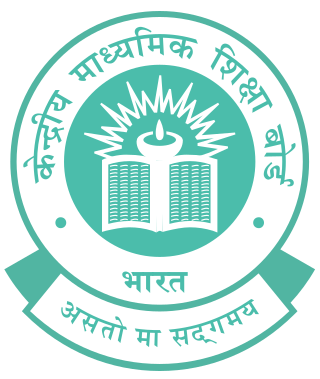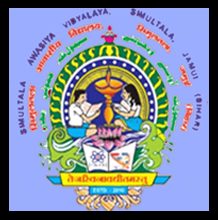The following outline is provided as an overview of and topical guide to education:
Educational assessment or educational evaluation is the systematic process of documenting and using empirical data on the knowledge, skill, attitudes, aptitude and beliefs to refine programs and improve student learning. Assessment data can be obtained from directly examining student work to assess the achievement of learning outcomes or can be based on data from which one can make inferences about learning. Assessment is often used interchangeably with test, but not limited to tests. Assessment can focus on the individual learner, the learning community, a course, an academic program, the institution, or the educational system as a whole. The word "assessment" came into use in an educational context after the Second World War.
Electronic assessment, also known as digital assessment, e-assessment, online assessment or computer-based assessment, is the use of information technology in assessment such as educational assessment, health assessment, psychiatric assessment, and psychological assessment. This covers a wide range of activities ranging from the use of a word processor for assignments to on-screen testing. Specific types of e-assessment include multiple choice, online/electronic submission, computerized adaptive testing such as the Frankfurt Adaptive Concentration Test, and computerized classification testing.
The California Assessment of Student Performance and Progress (CAASPP), known until February 2014 as the Measurement of Academic Performance and Progress (MAPP), measures the performance of students undergoing primary and secondary education in California. In October 2013, it replaced the Standardized Testing and Reporting (STAR) Program.
The Singapore-Cambridge General Certificate of Education Ordinary Level is a GCE Ordinary Level examination held annually in Singapore and is jointly conducted by the Ministry of Education (MOE), Singapore Examinations and Assessment Board (SEAB) and the University of Cambridge Local Examinations Syndicate (UCLES). Students are graded in the bands ranging from A to F and each band has a respective grade point, a lower grade point indicates better performance. The number at the end of each grade corresponds to the grade point that they receive. To pass an individual O-Level subject, a student must score at least C6 or above. The highest grade a student can attain is A1.
In India, board examinations refer to the public examinations that are conducted at the completion of secondary and senior secondary education.

Summative assessment, summative evaluation, or assessment of learning is the assessment of participants in an educational program. Summative assessments are designed to both assess the effectiveness of the program and the learning of the participants. This contrasts with formative assessment, which summarizes the participants' development at a particular time in order to inform instructors of student learning progress.
Formative assessment, formative evaluation, formative feedback, or assessment for learning, including diagnostic testing, is a range of formal and informal assessment procedures conducted by teachers during the learning process in order to modify teaching and learning activities to improve student attainment. The goal of a formative assessment is to monitor student learning to provide ongoing feedback that can help students identify their strengths and weaknesses and target areas that need work. It also helps faculty recognize where students are struggling and address problems immediately. It typically involves qualitative feedback for both student and teacher that focuses on the details of content and performance. It is commonly contrasted with summative assessment, which seeks to monitor educational outcomes, often for purposes of external accountability.
Amrita Learning is a computer-based 'adaptive learning' program in English and Mathematics. It provides interactive, audiovisual supplementary education for children of three-and-a-half years to 7th grade, for home and classroom use. Developed in collaboration with Amrita University, the content of this research-based software is in line with the NCERT/CBSE syllabi.

Jawahar Navodaya Vidyalaya (JNV) is a system of central schools for talented students predominantly from rural areas in India, targeting gifted students who lack access to accelerated learning due to financial, social and rural disadvantages.
Jnanadeepa School is an educational institution in Shivamogga District, Karnataka, India. It is run by the private education foundation Sri Aurobindo Foundation for Education (SAFE) through the Jnanadeepa Vidya Samsthe which also runs Sri Aurobindo PU College, Shimoga. The institution follows the CBSE curriculum and was the first private institution in the district to be affiliated to CBSE, Delhi.
Computer-aidedassessment (CAA) includes all forms of assessments students' progress, whether summative or formative, delivered with the help of computers. This covers both assessments delivered on computer, either online or on a local network, and those that are marked with the aid of computers, such as those using Optical Mark Reading (OMR). There are number of open source online tools to handle exams conducted on OMR sheets.
Nagarjuna Vidyaniketan is a high school in Bangalore, India. The school is affiliated to the Central Board of Secondary Education (CBSE). It is located in Yelahanka, Ramagondanahalli.

The Central Board of Secondary Education (CBSE) is a national level board of education in India for public and private schools, controlled and managed by the Government of India. Established in 1929 by a resolution of the government, the Board was an experiment towards inter-state integration and cooperation in the sphere of secondary education. There are more than 27,000 schools in India and 240 schools in 28 foreign countries affiliated to the CBSE. All schools affiliated to CBSE follow the NCERT curriculum especially from class 9 to 12. The current Chairperson of CBSE is Rahul Singh, IAS.
All India Secondary School Examination ( Secondary School Examination)commonly known as Class 10th board exams, is a centralized public examination that students in schools affiliated with the Central Board of Secondary Education, primarily in India but also in other Indian-patterned schools affiliated to the CBSE across the world. taken at the end of class 10. The board conducts the examination during the period of February- March earlier it was taken in March to April every year. In this exam, Mathematics, Science (Physics, Chemistry, Biology) and Social Science (History, Geography, Political Science, Economics) are compulsory with any two languages (official language of medium and foreign/schedule languages). Students can also opt skill subject such as information technology, painting, yoga, music or artificial intelligence. Successful candidates are awarded the Secondary School Completion Certificate, a Statement of Marks, and a Migration Certificate stating that the candidate has completed Secondary Schooling and can pursue higher education. For the academic year 2016–17, the Central Board of Secondary Education has revived the old system of syllabus and marking scheme (complete syllabus for All India Secondary School Examination and marks out of 500 (in COVID time out of 200) India has state exams and central exams.From 2017 to 2018 And later Academic year use old format
Continuous assessment is a form of educational examination that evaluates a student's progress throughout a prescribed course. It is often used as an alternative to the final examination system. Proponents of continuous assessment argue that the approach allows tracking of progress and has a chance of offering students more support, guidance, and opportunities to improve during the course or programme.
Techno India Group Public School Balurghat, or Balurghat Techno India Group Public School. or TIGPS, Balurghat is an English medium co-ed school following CBSE in Balurghat, West Bengal, India. The classes range from Pre-school playgroup to Class XII. However, for the 2022–2023 school year, it contains classes up to XII. The school has around 900 pupils.

An examination or test is an educational assessment intended to measure a test-taker's knowledge, skill, aptitude, physical fitness, or classification in many other topics. A test may be administered verbally, on paper, on a computer, or in a predetermined area that requires a test taker to demonstrate or perform a set of skills.
New Horizon Scholars School is located in Kavesar near Anand Nagar Circle off State Highway 42 (Maharashtra) in Thane (West) in the Mumbai Metropolitan Region of India. It is a branch of the New Horizon Scholars School from the Navi Mumbai suburb Airoli. The school includes a pre-primary education section called Neo Kids. It has classes from Nursery to Grade 12.

Simultala Awasiya Vidyalaya is a school in Simultala, of Jhajha Block, Jamui District in the Indian State of Bihar. The school has a record of producing 30 toppers out of 31 in top 10 of the Bihar School Examination Board in 2015. After the creation of the state of Jharkhand in 2000, the school was created in 2010 by the effort of politician Nitish Kumar. The students dominated the International Mathematics Olympiad in 2013. Students participate in inter-house and inter-set competitions and inter-school competitions.





